Abstract
Hypertension and its sequelae complicate pregnancy and can result in poor perinatal outcomes. Overall, U.S. blacks are more likely to be hypertensive than whites, but the degree to which this is true among women of childbearing age (including teenagers) is unknown. Using data from the second National Health and Nutrition Examination Survey (NHANES II), the authors describe hypertension prevalence rates for 422 black and 2,700 white reproductive-age women. The authors present observed data and also predicted prevalence rates derived by modeling the odds of hypertension using logistic regression statistical techniques. They find that black-white differences in hypertension prevalence are negligible among teenagers, but they are pronounced in the older reproductive ages. They estimate that twice the proportion of black women relative to white are hypertensive during pregnancy. Their results suggest that differential rates of hypertension between black and white women may contribute to the persistent excess infant mortality among blacks, but conclusive results cannot be determined from these data. These data are also valuable for the design and evaluation of screening, intervention, and followup programs for hypertensive disease among young women.
Full text
PDF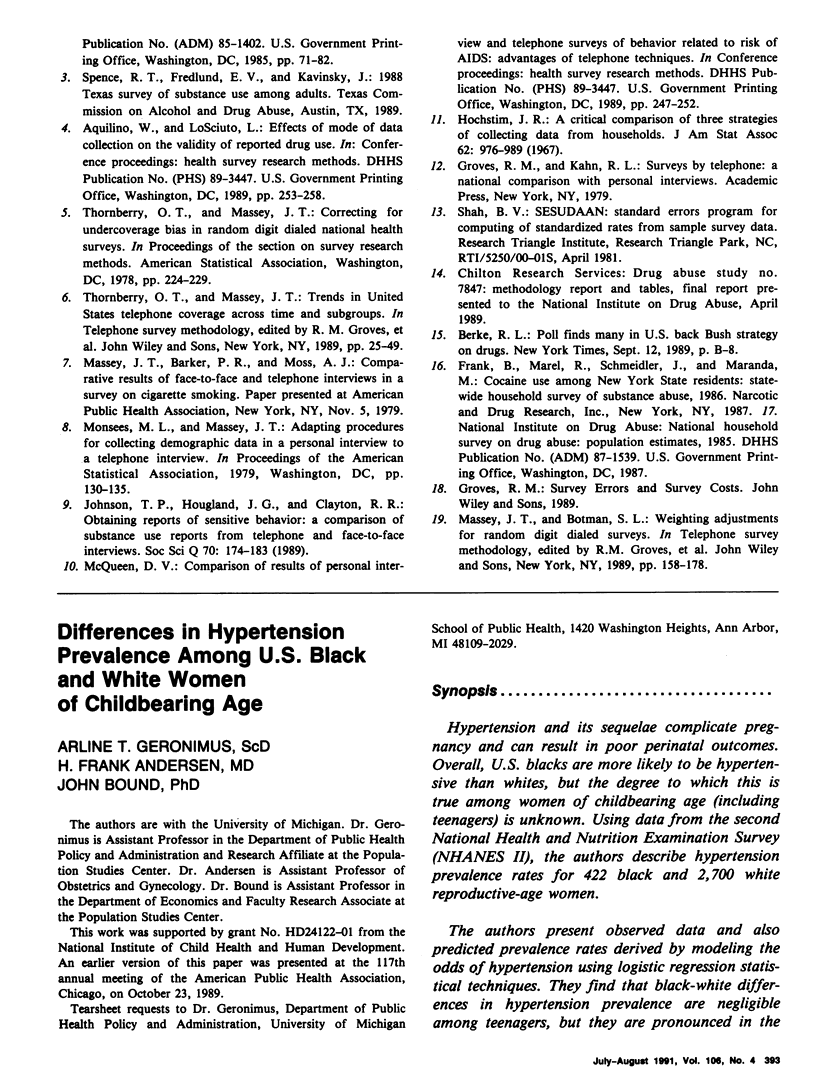
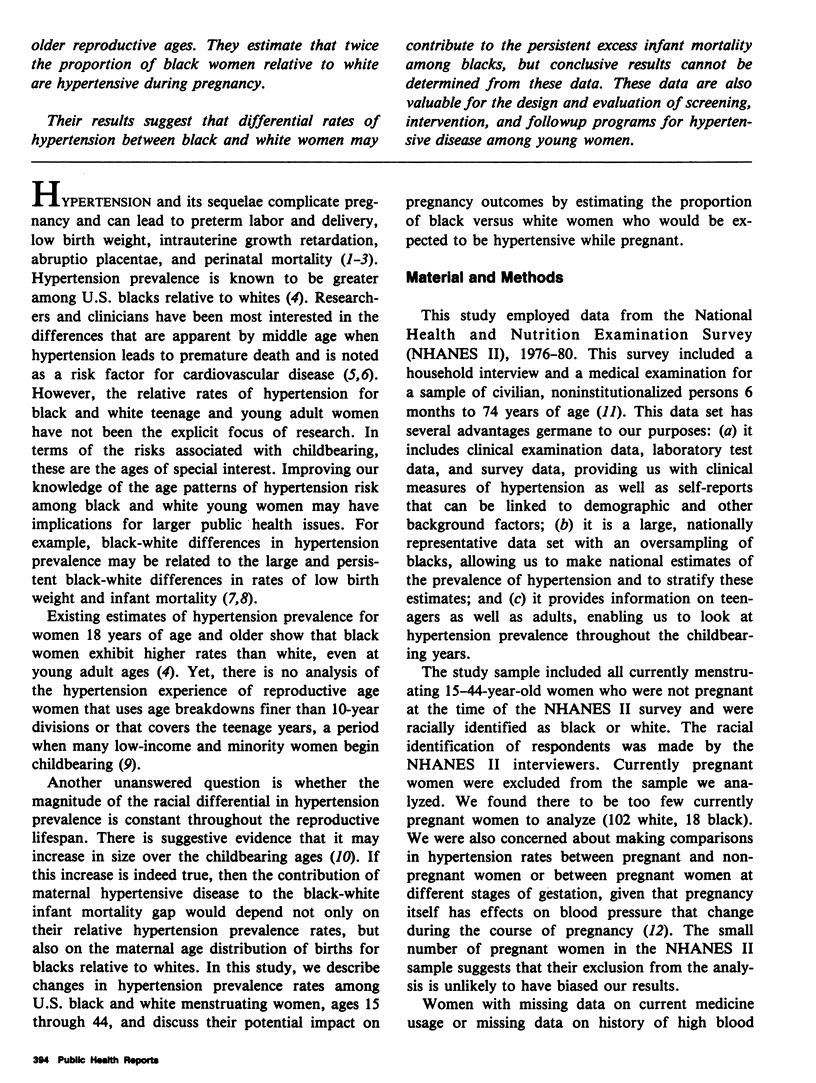

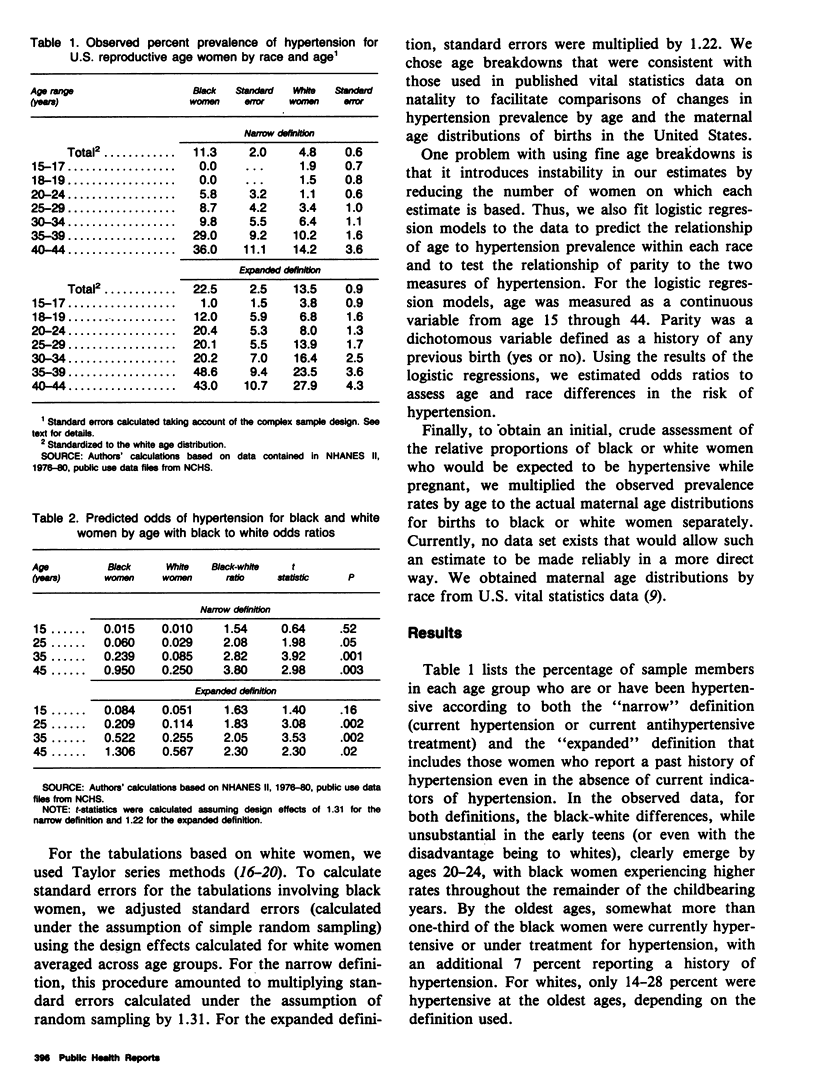
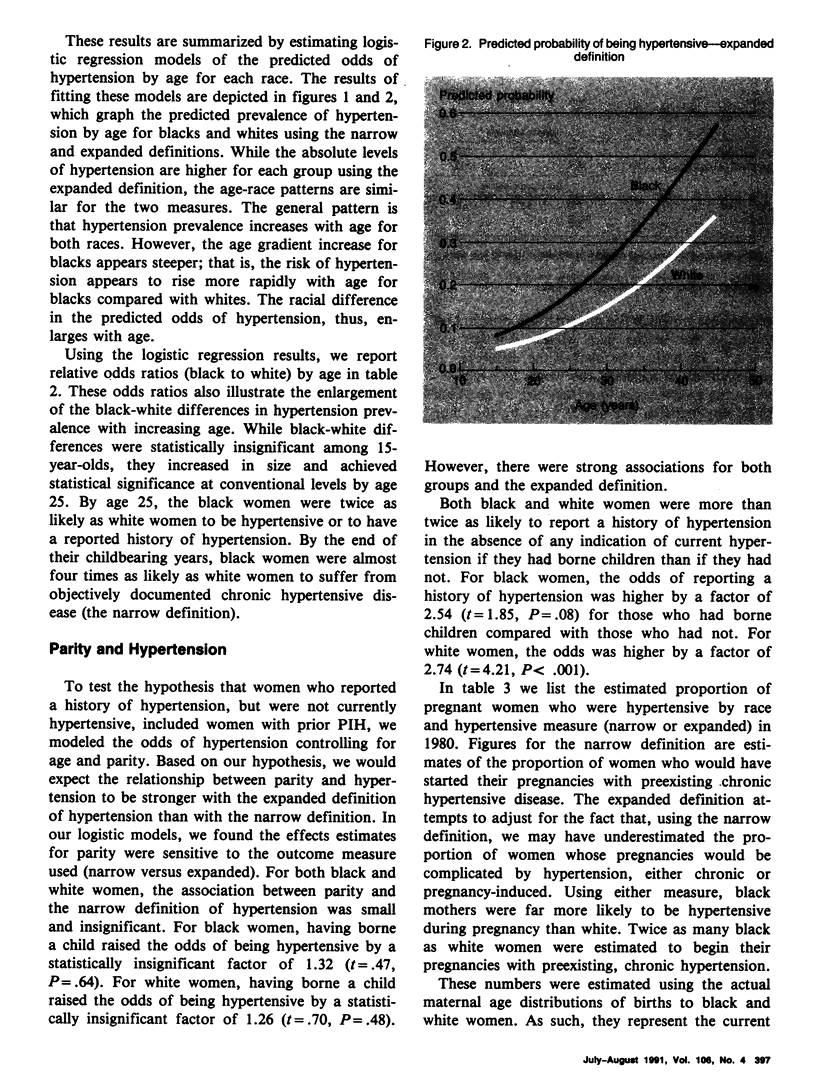
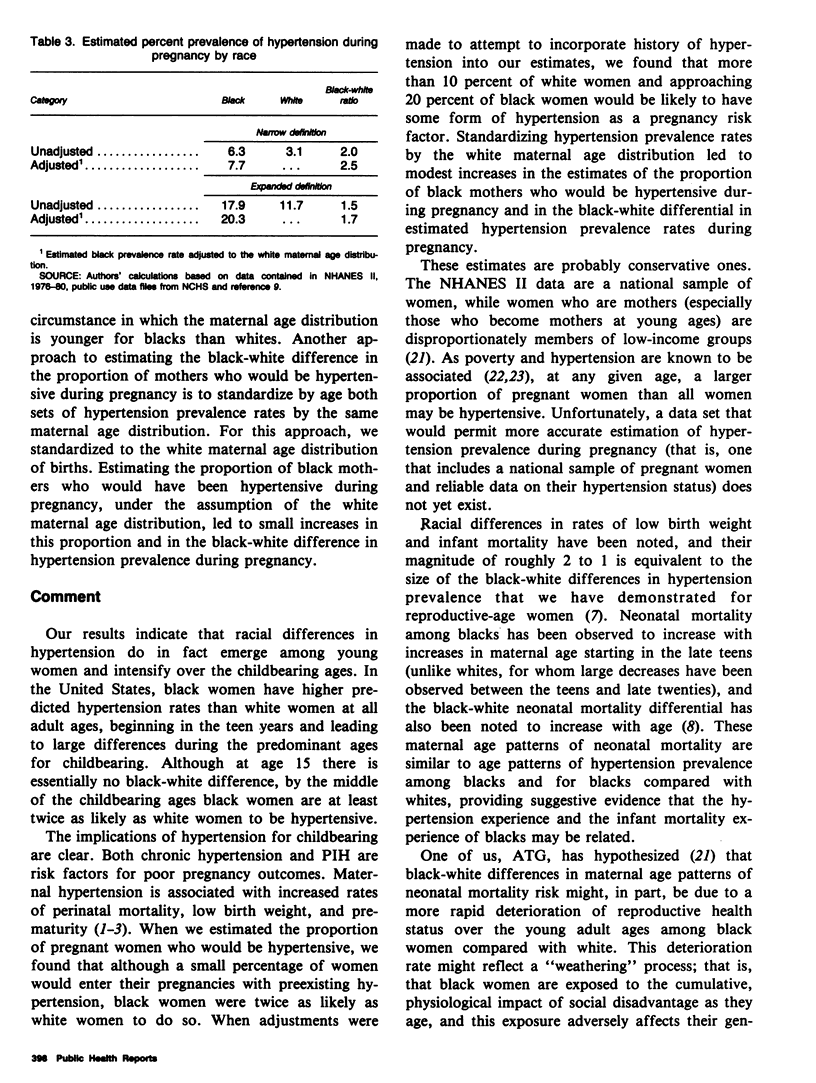
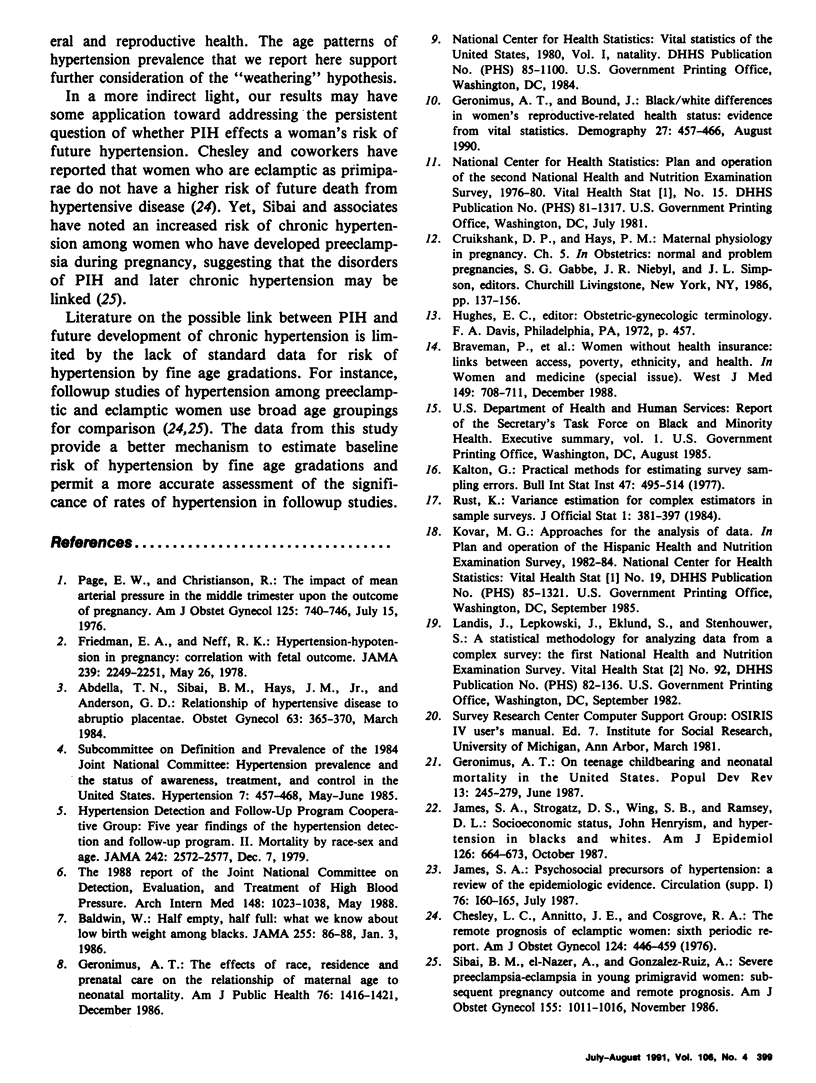
Selected References
These references are in PubMed. This may not be the complete list of references from this article.
- Abdella T. N., Sibai B. M., Hays J. M., Jr, Anderson G. D. Relationship of hypertensive disease to abruptio placentae. Obstet Gynecol. 1984 Mar;63(3):365–370. [PubMed] [Google Scholar]
- Baldwin W. Half empty, half full: what we know about low birth weight among blacks. JAMA. 1986 Jan 3;255(1):86–88. [PubMed] [Google Scholar]
- Braveman P., Oliva G., Miller M. G., Schaaf V. M., Reiter R. Women without health insurance. Links between access, poverty, ethnicity, and health. West J Med. 1988 Dec;149(6):708–711. [PMC free article] [PubMed] [Google Scholar]
- Friedman E. A., Neff R. K. Hypertension-hypotension in pregnancy. Correlation with fetal outcome. JAMA. 1978 May 26;239(21):2249–2251. [PubMed] [Google Scholar]
- Geronimus A. T., Bound J. Black/white differences in women's reproductive-related health status: evidence from vital statistics. Demography. 1990 Aug;27(3):457–466. [PubMed] [Google Scholar]
- Geronimus A. T. The effects of race, residence, and prenatal care on the relationship of maternal age to neonatal mortality. Am J Public Health. 1986 Dec;76(12):1416–1421. doi: 10.2105/ajph.76.12.1416. [DOI] [PMC free article] [PubMed] [Google Scholar]
- James S. A., Strogatz D. S., Wing S. B., Ramsey D. L. Socioeconomic status, John Henryism, and hypertension in blacks and whites. Am J Epidemiol. 1987 Oct;126(4):664–673. doi: 10.1093/oxfordjournals.aje.a114706. [DOI] [PubMed] [Google Scholar]
- Page E. W., Christianson R. The impact of mean arterial pressure in the middle trimester upon the outcome of pregnancy. Am J Obstet Gynecol. 1976 Jul 15;125(6):740–746. doi: 10.1016/0002-9378(76)90839-5. [DOI] [PubMed] [Google Scholar]
- Sibai B. M., el-Nazer A., Gonzalez-Ruiz A. Severe preeclampsia-eclampsia in young primigravid women: subsequent pregnancy outcome and remote prognosis. Am J Obstet Gynecol. 1986 Nov;155(5):1011–1016. doi: 10.1016/0002-9378(86)90336-4. [DOI] [PubMed] [Google Scholar]


